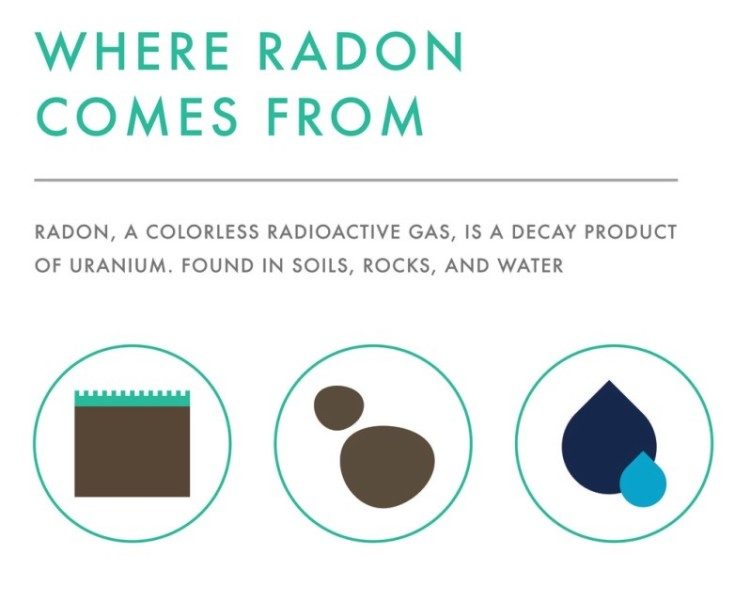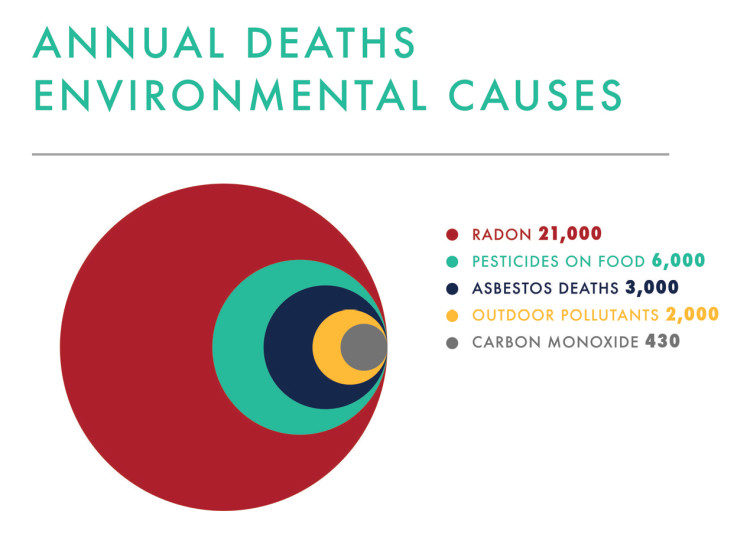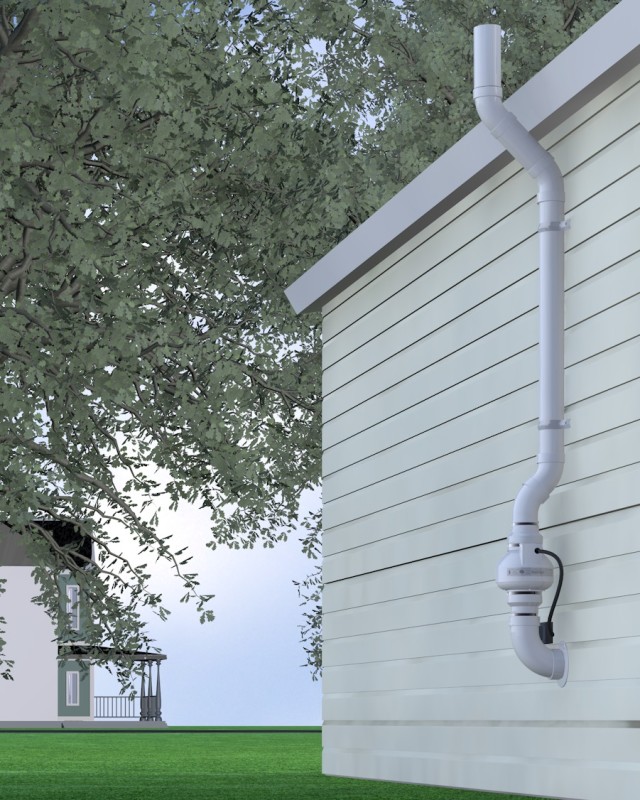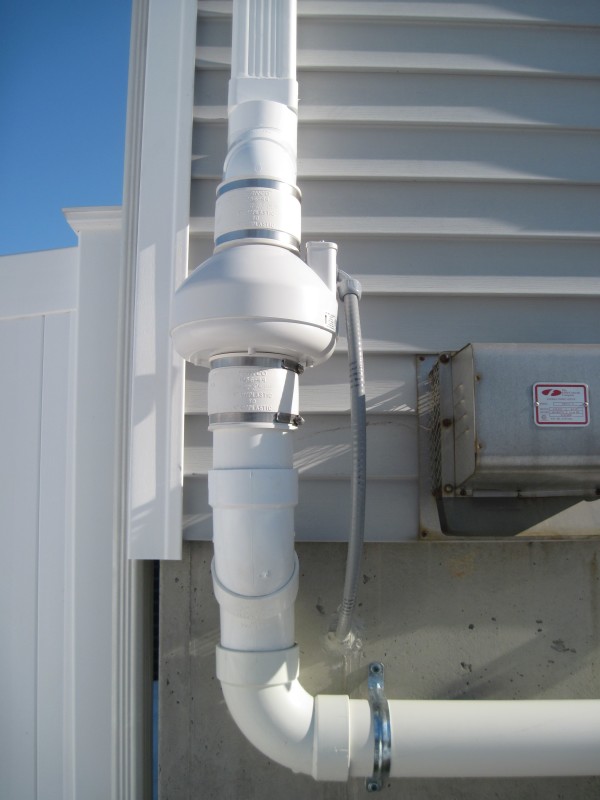The bigger the house, the bigger the responsibility, right? The tiny house movement is associated with a lower financial burden, less time spent on housework and general maintenance, and the increased freedom that goes along with falling below the minimum square footage of most building codes. When it comes to radon, however, a tiny home shares more in common with a traditionally-sized house than you may think.
John Mallon of Radon Detection & Control in Pennsylvania has mitigated more than 27,000 homes for radon gas. “There’s this inaccurate rumor that if there’s no basement, there’s no radon,” says Mallon. Radon affects 1 in 6 homes across all 50 states, regardless of whether they are 200 or 2,000 square feet, brand new or 100 years old. It’s all about what the house is built on. Because radon seeps into the home from the ground up, it’s really the first livable level of the home that is the most dangerous—which, for most tiny homes, is the only level.

But let’s back up for a minute… What exactly is radon? When most people think of an odorless, colorless threat to their indoor air quality, they think of carbon monoxide, which is responsible for roughly 430 deaths every year. Radon-induced lung cancer, on the other hand, kills 21,000 people each year and has been named the top environmental health hazard by the U.S. Environmental Protection Agency. It’s important to test and treat every home for radon, as radon-induced lung cancer is most often caught in stage 4, at which point very few patients live past 5 years.

There is absolutely no reason for any person to die from radon, especially with radon systems being one of the more affordable home improvement projects. The most common method of removing radon from a home is through installing an Active Soil Depressurization (ASD) system, which works much like a vacuum cleaner. An active ASD system with a radon fan draws radon up from beneath the home and vents it safely above the roofline.

In a small space that relies on maximizing efficiency in order to function properly, an ASD radon system truly is the perfect fit. Most tiny homes have been recently built and are tightly-sealed during construction to minimize heating/cooling costs. Often, these tighter homes trap radon, moisture, and other contaminants inside. An ASD system provides a method of ventilation for all three of these health hazards and can be safely installed on a home’s exterior wall so as not to take up any of the already precious interior space.

43 million people die each year across the globe from poor indoor air quality. In a tiny home where truly every breath counts and spaces are often built to the exact specification of the owners, there is no reason not to test and treat a home for radon gas. One of the greatest benefits of living in a tiny home is the extra, stress-free time inhabitants have to spend to together—quality time away from the concerns that plague typical homeowners. In a space that is so carefully curated, so lovingly crafted, there simply isn’t any room for radon.

I think this article is a bit of fear mongering. I’m a former real estate agent, and *every* transaction I did, there was a radon test. Radon rises out of the ground, and tends to collect in basements, crawlspaces, and other ground level places that are poorly ventilated. The problem occurs when the radon becomes trapped. Radon mitigation systems ventilate it to the atmosphere, and there’s no problem anymore. Traditional houses are attached to the ground, and radon may or may not tend to collect in them. It depends upon the area. Tiny houses, usually being built on trailers, have and air space between their living areas and the ground. . . and that’s the ventilation. Even if the trailer has some skirting around it, if you leave some holes for moisture ventilation, the radon will vent away, too.
Hi Kent,
Speaking as a Homebuilder ( soon to be a tiny Homebuilder) and a radon mitigator. I’d like to add a small caveat. Because of the way radon enters a home, through what’s called the “stack effect” which is a slight suction on the ground created by warm air rising and exiting the home, I would reason that a THOW would be less succeptible to radon unless of course it were somehow underpinned.
It’s still a good idea for everyone to check their home in my opinion. The entire test kit with lab analysis costs about $15 and can be purchased at most any hardware store. It should also be noted if you are testing a THOW you would want to test it any time it was relocated as the radon is a natural decay product and can vary from site to site. I’ve heard vastly different results simply by moving a testing location 50 feet or less.
Well, that’s my two cents worth anyway.
Be well.
I don’t have a tiny house yet, but rather an RV. What about the RV? Is it affected by radon? Should I be worried?